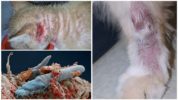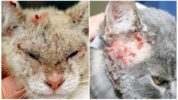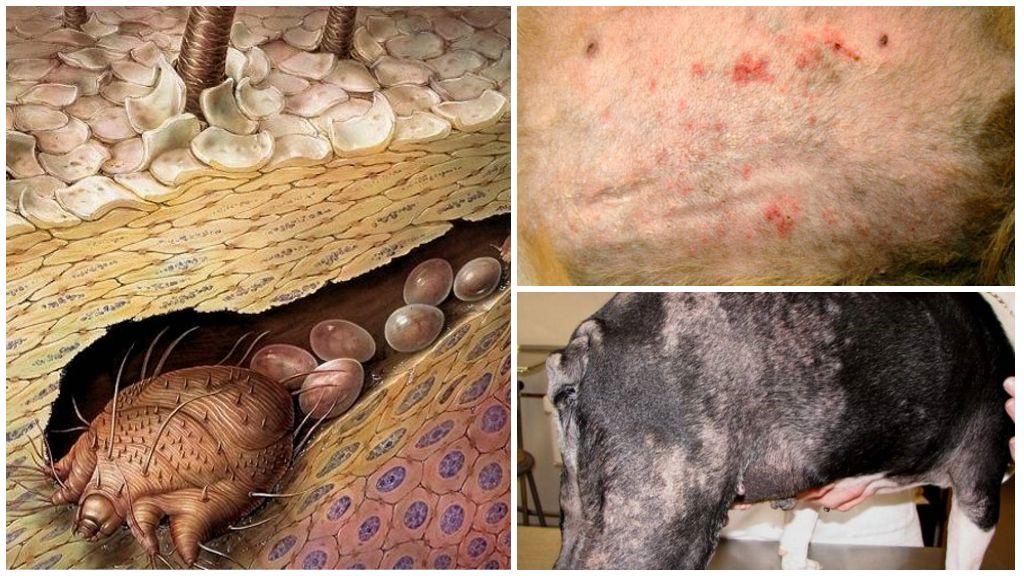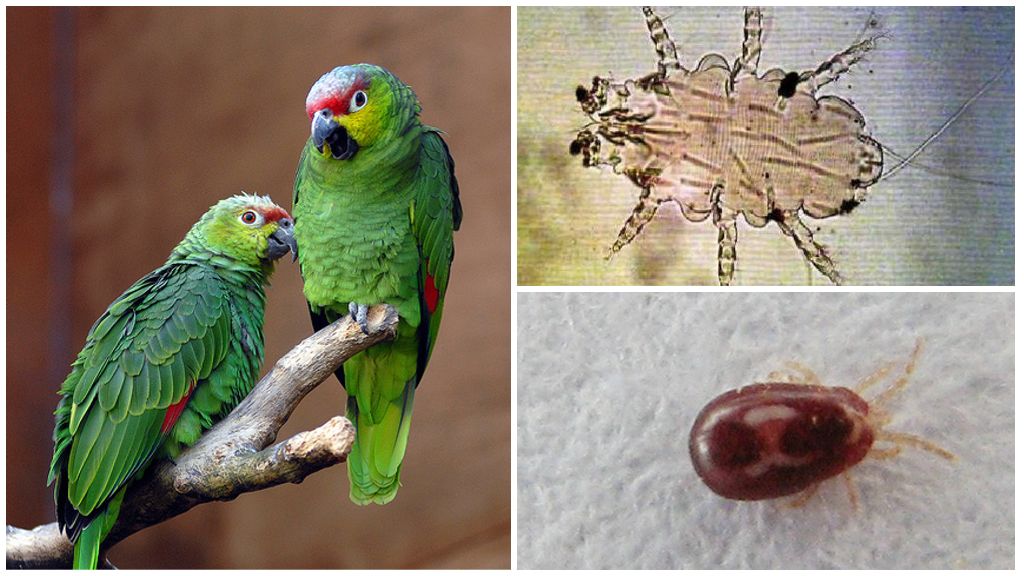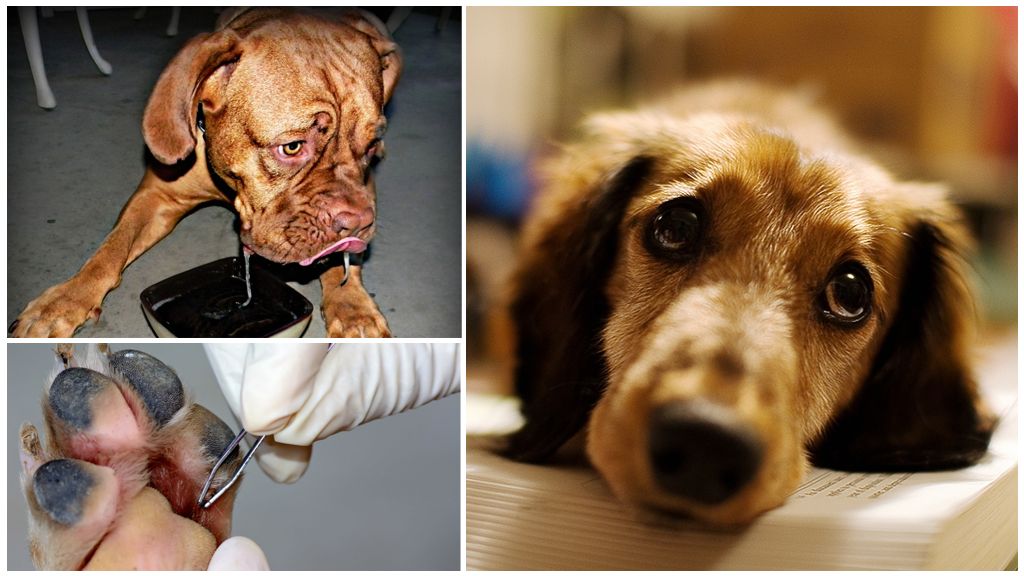- Demodecosis in cats
- Demodecosis in cats
- Treatment of demodicosis in cats
- Folk recipes for demodicosis in cats
Demodecosis in cats is a dangerous disease that, if detected, requires immediate treatment. The causative agent is demodex tick. This is a microscopic sized parasite that can even be found on the body of a healthy individual. Its activity increases only with weakened immunity, therefore, whitening is most often diagnosed in young kittens or elderly cats and cats.
Symptoms of demodicosis in cats
The disease provokes active reproduction of the vermiform tick. He belongs to the group subcutaneous parasites and he prefers to choose hair follicles or sebaceous glands as his place of location. Feline demodicosis can be detected independently, but it is better to entrust the diagnosis to professionals.
Infection of a pet occurs during a tick bite. The parasite penetrates the epithelium and feeds on its cells. As a result, the tick multiplies rapidly and actively releases the products of its vital activity. It is they who are able to weaken the protective properties of the cat's body.
Important!
Feline demodicosis cannot go to humans. People can also suffer from this disease, but a different kind of tick will be the causative agent. Canine demodicosis transmitted to humans, as it has the same type of pathogen.
On the photo of demodicosis in cats, red spots on the body and the absence of hair in infected areas can be seen. In the bite zone, redness of the skin is noted.
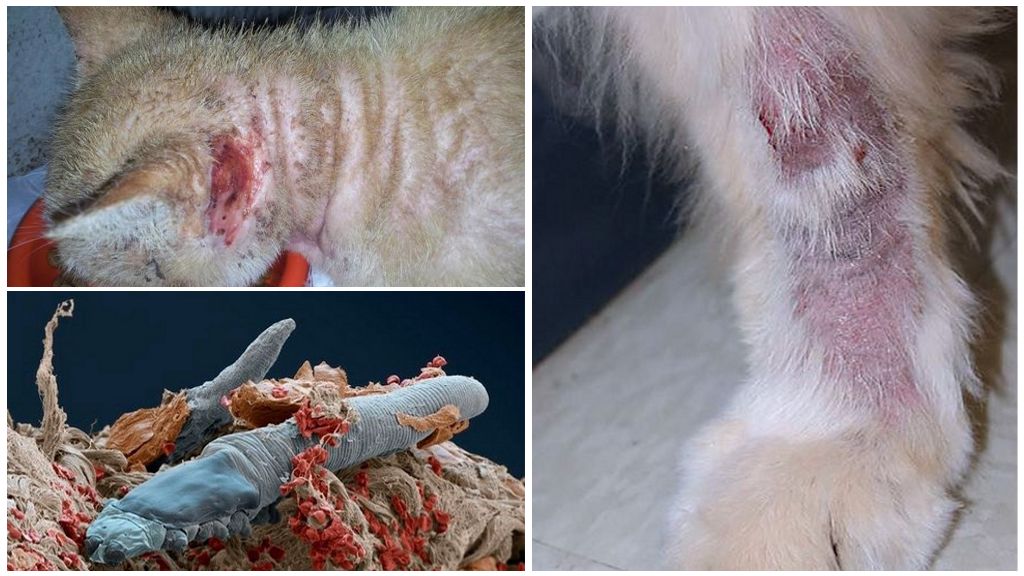
The main manifestation of the disease in cats will be the following symptoms:
- Pet lethargy.
- Weakness.
- Apathy.
- Itching, the cat will often and hard itch.
- The appearance of small pustules, combing which will lead to open, bleeding wounds.
- Receding hairline.
- Enlarged lymph nodes.
Important!
You need to seek help from specialists only by noticing that the cat has begun to itch. Already at this stage, you can also detect enlarged lymph nodes. The sooner treatment is started, the faster the disease will be defeated.
Types of disease
To make sure the diagnosis is correct, the veterinarian will take a scraping from the cat. With a scalpel in several places he will collect particles of skin. As a result, if the diagnosis is confirmed and the cat becomes infected, the study will show a certain number of parasites.
Demodecosis of animals can manifest itself in varying degrees of severity. To suspect a problem, it is enough to focus on general signs, and only a doctor can provide more accurate information.
Symptoms also depend on the specific type of demodicosis. There are 3 of them:
- Localized. This is the mildest stage. At this stage, redness of the skin of the cat, peeling in the affected areas are noted. Additionally, abscesses appear, since the skin loses part of its healing properties. The number of affected areas is small and after 1-2 months, demodicosis passes on its own and does not require treatment.
- Generalized. This is a more severe form of the disease. During its course, extensive lesion zones are observed.Locations of the tick itch, cause discomfort to the cat. Also, this species is characterized by bleeding wounds, pustules, peeling. First, demodicosis appears on the head and neck, then goes to the limbs and back. The foci of lesion tend to merge together and form one large wound.
- Juvenile. The most dangerous and unpredictable type. Appears in cats with a hereditary predisposition to the disease. It is difficult to treat, proceeds with complications, almost completely destroys the body's defense system.
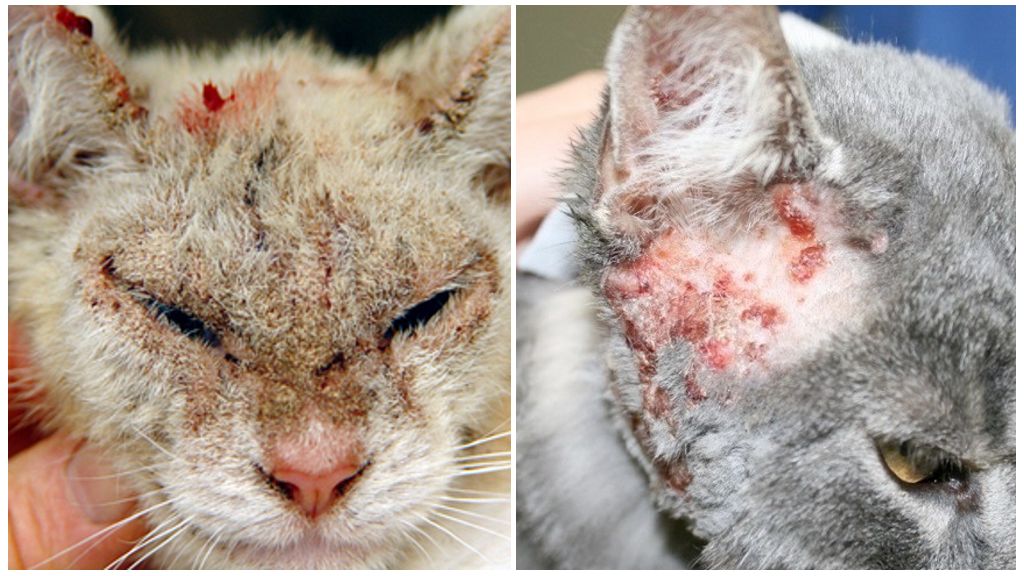
Also, demodicosis can be:
- Primary. When the disease manifests itself after the first contact with the parasite.
- Secondary. In this case, the disease occurs as a result after a skin disease and reduced immunity.
Important!
An accurate diagnosis can be made only after obtaining the result of scraping. Demodecosis has similar symptoms with skin fungus, eczema, pyoderma, ringworm, and streptococcosis.
Causes of occurrence
Feline demodicosis is a consequence of a decrease in immunity. But other factors can also provoke the disease:
- genetic predisposition;
- helminth infection;
- poor quality nutrition;
- lack of vitamins of groups B, A and E;
- inappropriate conditions.
Important!
A tick is located on the body of each animal and refers to opportunistic parasites. And only the creation of favorable conditions will provoke their growth.
Effective treatment and drugs
The cat will have to treat dedecosis for a rather long time. On average, recovery takes from 1.5 to 3 months. Launched cases will have to be treated for about six months.
Treatment for mild demodicosis in cats consists of the use of chlorhexidine shampoos. They gently cleanse the skin and remove crusts. After bathing, use disposable towels.
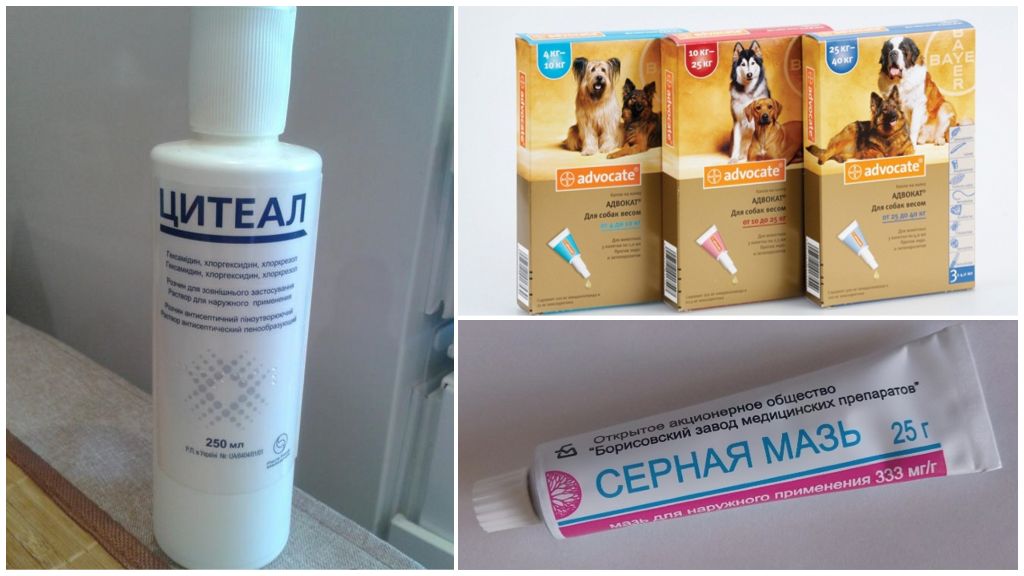
Infectious demodicosis is treated with the following medications:
- Citadel. The solution has antiseptic properties. It is used to treat wounds on the skin of a cat.
- Lawyer. Drops of antiparasitic action. Kill parasites on the body and prevent secondary infections from joining.
- Perol. A solution for treating animal skin. Treatment is carried out according to the testimony of a specialist.
- Sulfuric ointment. Kills microbes, disinfects, dries and accelerates healing.
- Mycodemacid. Chlorophos based solution. Suitable for treating wounds and accelerating healing.
Also, affected areas can be treated with chlorhexidine or hydrogen peroxide.
In the most severe cases and when a secondary infection is attached, doctors prescribe subcutaneous injections of Dectomax or Ivomek. Immunol, Gavamit, Maksidin will help to strengthen defenses. To speed up the restoration of wool, Tsipam, Amit, Ektodes are prescribed.
Important!
Before treatment, be sure to disinfect cat accessories.
Treatment with folk remedies
You should not focus only on home methods. They are recommended only to strengthen the main therapy and only after the permission of a specialist.
Home treatment:
- Skin treatment with chamomile infusion. To cook it. need to pour 1 tbsp. l dry flowers of the plant 100 ml of boiling water. Insist 2-2.5 hours. Wipe the affected skin every other day.
- Bathing with tar soap. Use no more than 1 time in 2 weeks.
- Kerosene. Suitable for the treatment of bald skin. One-time processing is performed.

Important!
It is impossible to completely cure a cat of demodicosis. Even after recovery, the animal remains the carrier of the pathogen and, with a decrease in immunity, the parasite is reactivated again.
Prevention of Demodecosis in Cats
Given that demodicosis can develop in a cat at any time, you should follow the simple rules of prevention. To prevent the disease, you must:
- Balance nutrition.There should be enough vitamins, minerals and fats in your cat’s food.
- Keep your pet environment clean. Timely change the contents of the tray, wash the dishes.
- Perform periodic deworming.
- 1 time in 6 months to carry out additional fortification.
On a note!
The best option will be the introduction of the vaccine Immunoparasitan 1 time every 3-4 months. It will provide protection against ectoparasites, which are carriers of demodicosis.
Thus, any cat can get demodecosis. Given the danger of the disease, it should be treated at the first sign. It is better not to try to diagnose the disease yourself and choose a medicine, so as not to lose time. Only qualified specialists are involved in the treatment.
